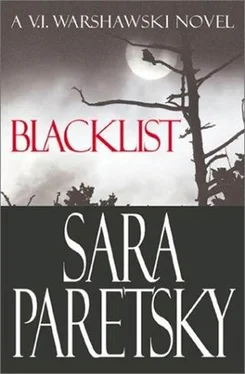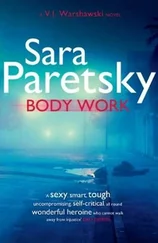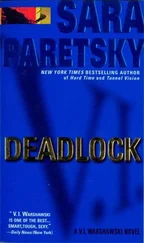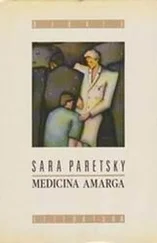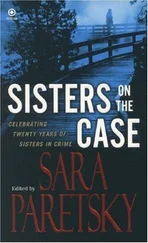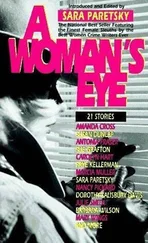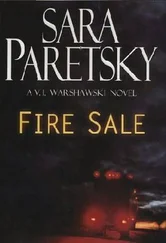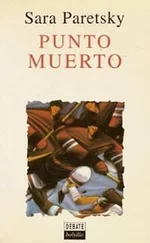“‘Come on over to the front of the bus, I’ll be riding right there,’ yes, indeedy,” I said aloud. “Why are you using New Solway’s tame lawyers as your registered agent, Mr. Llewellyn?”
I didn’t think Julius Arnoff would tell me anything, but the young associate might. I called Larry Yosano, both his home phone and his mobile, but only got voice mail at both places. I left a message with my own cell phone number.
Of course, Geraldine Graham would know. She’d also know what her mother was referring to when she talked about theft against her household. I called Anodyne Park. Ms. Graham was resting, Lisa told me, and couldn’t be disturbed.
“I really just wanted to know if Augustus Llewellyn’s family worked at Larchmont Hall before he became rich and famous.”
“Who are you working for?” she hissed. “Does Mr. Darraugh know you’re with the newspapers, trying to dig up that old dirt? We never knew the Llewellns. Mrs. Graham met him socially through Mr. Bayard. And if you try to say something else, the lawyer will deal with you, or Mr. Darraugh will take care of you himself.”
I hung up, more bewildered than ever. Had Geraldine been Llewellyn’s lover? But what did that have to do with her mother’s letter to Calvin Bayard?
Geraldine had met Llewellyn socially through Calvin Bayard. Which is also how she had met Kylie Ballantine. Who’d been fired from the University of Chicago because Olin Taverner demanded it of the university’s president. Olin was Geraldine’s cousin as well as a neighbor, even though he spent most of his time in Washington in those days.
Amy Blount had given me her photocopy of Taverner’s letter to the university, along with the picture of Kyhe Ballantine dancing for the Committee for Social Thought and Justice benefit. I still had the copies in my briefcase.
I took them out and studied them. Dancers in Western tights and toe shoes, faces obscured by African shields or masks-who had known one of them was Kylie Ballantine? Or, for that matter, where she was dancing? The shot was of the stage, not of the audience. All you could tell was that it was an outdoor venue, because evergreen branches appeared behind the wings.
Who had taken the picture? Who had sent it to Taverner? I dropped it on my desktop. The more bits and pieces about New Solway that I gathered, the more confused I became. And what about Edwards Bayard’s conviction that Calvin wasn’t his father? The gossip he’d overheard as a child-did that have anything to do with this story, or was it just gossip?
Amy had included a few notes on the Committee for Social Thought and Justice. She said not much had been written about it because it wasn’t as well known as other left-leaning groups of the forties and fifties, “not like the Civil Rights Congress, where Dashiell Hammett sat on the board, and Decca Mitford and Bob Truehoft did groundbreaking legal and social work for African-Americans out in Oakland.” She’d found one article in the Journal of Labor History, part of the oral history of black labor organizers of the forties, which included reminiscences about the beginnings of the group.
The article dealt mostly with the role that black members of the hotel workers union played in the struggle against the Mob and the hotel industry. One of the men interviewed had been a Communist who hung out at a West Side bar called Flora’s, where left-leaning workers and intellectuals, both black and white, congregated.
Apparently, when Armand Pelletier returned from Spain, he started bringing some of his writer and painter friends to Flora’s, where they had informal meetings, gave impromptu concerts and also helped the labor leaders write and print leaflets. Artists and writers from the Federal Negro Theater Project often showed up; “… the man in the interview definitely remembers Kylie Ballantine coming there,” Amy had written. “Not very many other writers or artists were mentioned by name, except Pelletier, because he was the important organizer of the artists; the interview was focusing on black labor leaders.”
One day Pelletier joked that the Dies Committee in Congress would shut down Flora’s if they knew that the Federal Theater Project was still
active there. “We’ll call ourselves a committee, too, just like Dies does, one that keeps American values alive. But we’re not here to investigate people’s toilets and peer in their bedrooms; we’ll have a committee for working people who believe in the real values of America.” Someone came up with the cumbersome title, Committee for Social Thought and justice, which the members themselves shortened to “ComThought.”
ComThought never had an active organization or board, but they did raise money to help fund some of the experimental arts programs Congress had cut out of the New Deal. And since many of the people at Flora’s were Communists, and were arrested, ComThought began providing legal defense money for them in the late forties and early fifties. Pelletier himself served six months in prison, both for giving to the fund himself and for refusing to name any other donors.
I thought again of Geraldine and the pet charity of Calvin’s she’d given money to. Her mother definitely would have hated any organization that she thought was a Communist front.
I looked at the clock. When I’d talked to Lotty yesterday, she had invited me to dinner with her tonight. It was five-thirty now-if the traffic gods were kind, I could make it out to Anodyne Park and back in two hours. I called to say I might be a bit late; she adjured me not to make it too late, since she had an early date in the OR, but if I could get to her by eight she’d still like to see me.
Charity Begins at Home
You’re a determined young woman, aren’t you, Ms. Warshawski?” Geraldine Graham was sitting in the chair under her mother’s portrait, the remains of her supper on a tray on the piecrust table.
“It gets me places brains and brawn won’t take me,” I agreed.
When I’d reached Anodyne Park at six-thirty, Lisa had told the guard not to admit me. I didn’t waste time on argument, but drove back around to Coverdale Lane. It was dark now, but I quickly found the entrance to the culvert under the road. I shone my flashlight around-it didn’t look to me as though Bobby had organized an exploration of the area yet.
I was still in jeans and running shoes; hunched over, my back aching from the need to stoop, I stomped through Benji’s and my footprints, trying not to obliterate the wheel tracks from the golf cart. When I got to the juniper bush on the Anodyne Park side, I stretched myself thankfully. I tried to clean the muck from my shoes, but when I got inside Geraldine’s building, I took them off: no point adding mud to my other iniquities in Lisa’s eyes.
Getting inside Geraldine’s building didn’t require any special skill, just the time-honored method of pressing apartment bells until someone buzzed me in. An old person in Chicago would have been more cautious,
but they were a trusting bunch in Anodyne Park, at least trusting in their guard at the gate.
At Geraldine Graham’s own front door, Lisa answered my insistent ring. She was so startled she didn’t react at all for a second. By the time she decided to slam the door in my face, I had given her a genial “good evening,” dropped my shoes outside the door, and moved past her into the hallway. I could hear Ms. Graham calling from the living room, demanding to know who was at the door.
I went in to greet her, and had the satisfaction of hearing her admonish Lisa for trying to keep me out: I was there at Geraldine’s request, to tell her what had happened at Larchmont on Friday night. When I’d run through enough of the highlights-including my interrogation by the FBI-to satisfy her, I finally turned to my own agenda.
Читать дальше
